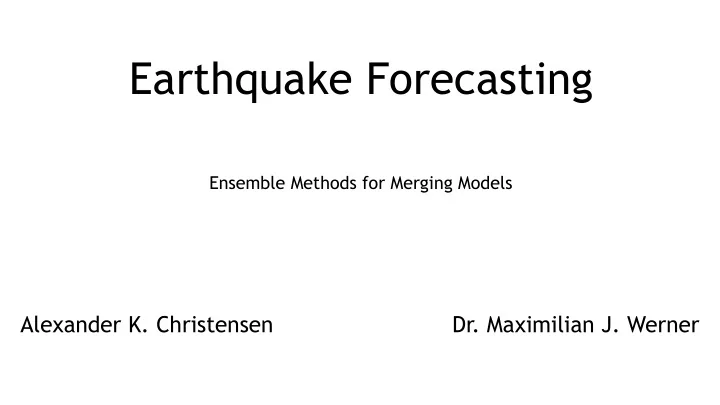

Earthquake Forecasting Ensemble Methods for Merging Models Alexander K. Christensen Dr. Maximilian J. Werner
Motivation What is ‘forecasting’? • What can we actually forecast? • What can we do with this? • We developed a new strategy for combining models. •
Canterbury Earthquake Sequence, NZ • CSEP • Sept 2010 – Dec 2011 • Why this Sequence? - Complex but well-documented series - Very destructive - Significant aftershocks • Our dataset begins 1s after Darfield M7.1 event.
Experiment Design
Base Models 3 types • 1. Physical – e.g. stress modelling 2. Statistical – e.g. smoothing/clustering 3. Hybrids Our portfolio: • - 5 physical - 6 statistical - 4 hybrid - 15 total
Model Ensembling “The information gains of the best multiplicative ensembles are greater than those of additive ensembles constructed from the same models.”
Optimised Log-Linear Pooling
Existing Ensembles
Results
Weights from Existing Ensembles
Comparison to Existing Ensembles
Performance Ranking
Performance Ranking
Performance Ranking
Performance Ranking
Discussion & Implications • Multiplicative approach – verdict? - Competitive - First effort – could improve further! - Slower - Mustn’t overinterpret! • Future directions - Other earthquake sequences - Deeper analysis
Machine Learning • Insufficient data - Weights only 300 data points. - Possibly with more models + time windows (e.g. daily)
Conclusion • Optimised Log-Linear Pooling is effective on this dataset - Merits further study/improvement - Other multiplicative approaches? • Machine learning not yet appropriate - Need more data
Recommend
More recommend